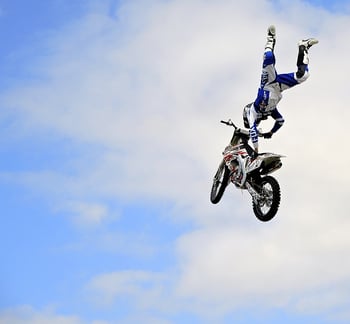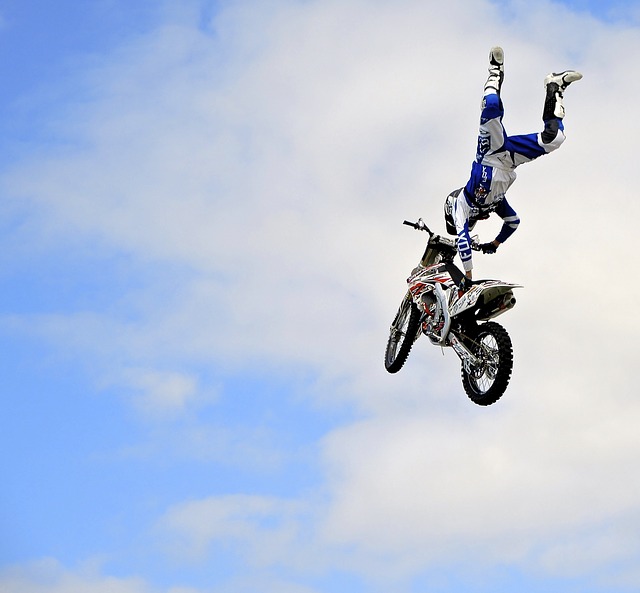For today's blog, we weclome guest blogger Terry Penney, a safety professional, presenter, motivational speaker, and safety program developer.
Safety in the movie/film and television world is diverse and always safety-oriented, and checklists are more than a piece of paper. A safety incident onsite on location can mean more than a retake; it can lead to huge dollars lost and down time.
The film and television Industry is a unique business, and as such, presents unique health and safety hazards.
As with most safety information, many aspects must be proactively considered. Safety professionals must know each production, each worker, each location, etc. With industry cooperation and governmental interaction, realistic procedures are reviewed, practices are developed, and checked methods are identified for potential hazards in their work environments—all with the purpose of increasing productivity and protecting those working in the film and television industry.
 Safe procedures do not involve losing the appearance of risk that can be such a vital quality of the production.
Safe procedures do not involve losing the appearance of risk that can be such a vital quality of the production.
Safety guidelines are intended to assist people involved in the industry and not to replace the laws that are in place. Employers, producers, supervisors, and working professionals are urged to refer to the actual legislation to determine their legal workplace duties and rights.
Safety guidelines aim to educate every worker, in all disciplines, at all levels, in the value of hazard recognition and safe working practices. Education is the foundation of any health and safety program, with knowledgeable performers, support staff, and management working together. The more workers and management know, the more effectively they can identify specific needs and issues before those issues become problems.
There are many occupational health and safety hazards associated with motion picture and television production. An obvious example is the professional stunt performer jumping off a cliff or crashing a car. However, as we will see, the risk is not just to stunt performers during these stunts; others can also be affected.
In addition, there are a multitude of other occupational hazards that are found on motion picture and television sets and locations, including chemical and safety hazards during preproduction, ordinary fire hazards, special effects, and extreme temperatures, as well as ordinary medical problems ranging from bee stings to heart attacks. Lack of quick access to adequate medical facilities, especially when filming at remote locations, can often exacerbate the problem.
Daily and sometimes hourly hazards and risks can cover any one of the following items. Yes, the show must go on, but not before all the safety items are controlled and quantified via checklists and signed off by senior staff.
- Safety responsibilities and duties.
- The work refusal process.
- Advanced first aid and worker transport safety when medical needs come about.
- Hazards materials (GHS).
- Communication regarding potentially hazardous procedures.
- Production company stunt plan review and risk assessment.
- Stunt plan and controls, including artificial environments.
- Rescue plan.
- Explosives and/or pyrotechnics.
- Open flames.
- Smoke and fog.
- Propane use and education.
- Gasoline-operated equipment.
- Electrical safety.
- Transportation/design, including journey management.
- Seat belts, harnesses, roll cages, and air bags in vehicles.
- Motorcycles.
- Railways and railway crossings.
- Camera cars: process trailers and towed vehicles.
- Boom vehicles and camera cranes.
- Working at heights.
- Mobile elevating equipment.
- Scaffolding.
- Child performers.
- High falls.
- Skydiving.
- Helicopters.
- Fixed-wing aircraft.
- Hot air balloons.
- Underwater stunts and underwater operations.
- Water hazards.
- Water locations, small craft/vessel, and at dockside.
- Working In extreme temperature conditions.
- Location requirements and environmental concerns.
- Hair and make-up, including derma-bases problems and allergic reactions to products.
- Multiple dressing rooms/hygiene and worker comforts, including showers and toilets.
- Craft services and food catering.
- Carpentry/woodworking.
- Firearms.
- Animal handling.
- Indigenous pests.
- Exotic animals.
- Industrial and construction regulations.
- Department heads (as per safety responsibilities and duties).
- Electrical safety.
- Adverse weather conditions.
- Flotation garments.
Takeaway
The common goal via compliance and checklists is to raise the standard of health care, educational resources, and quality of life for artists, and to take those resources out into the community, both locally and nationally, so that what you are seeing is not just entertainment.
Safety professionals involved in the industry have even produced their own training and reference books, such as “The Artist's Complete Health & Safety Guide, 3rd Edition,” and “The Health & Safety Guide for Film, TV & Theater, 2nd Edition,” both by Monona Rossol, to name just a couple.











